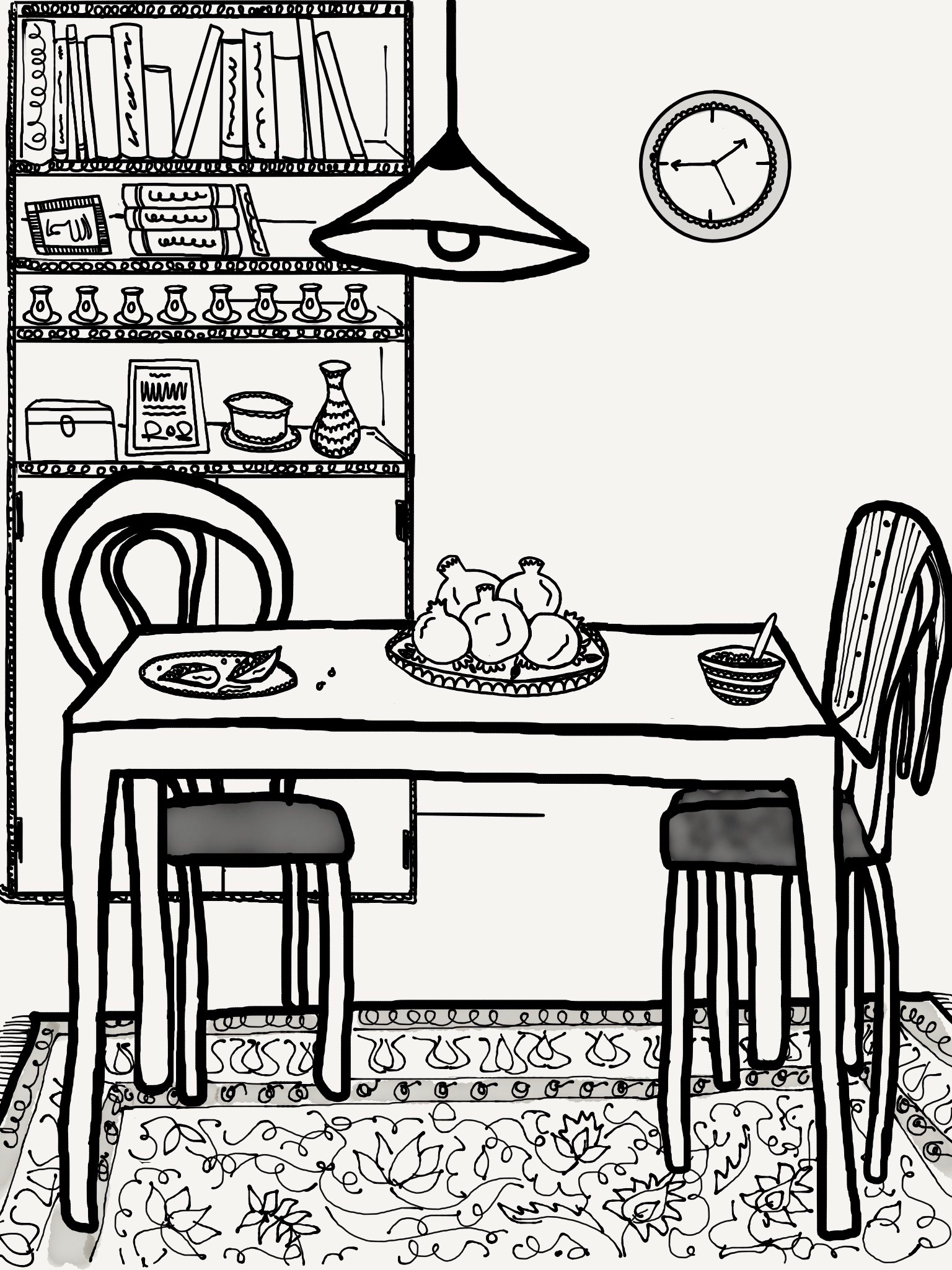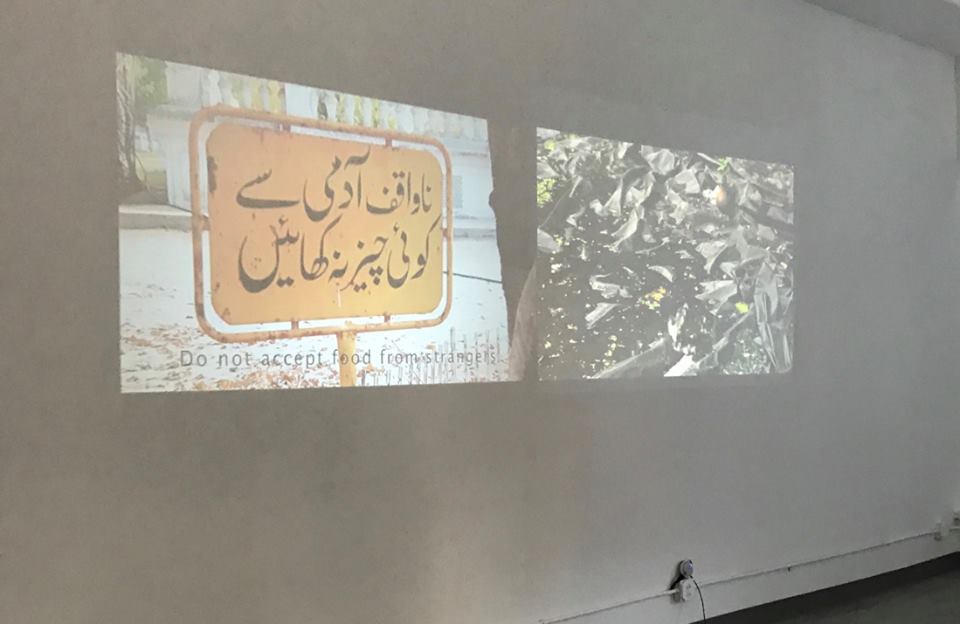Perched on 2nd and Arch, major cross streets in the Philadelphia Arts District, stands a gallery with a simple gray sign hanging above its door – Twelve Gates Arts. Named for the baradari (“twelve doors”) style of regal pavilions and the city gates that marked urban centers across Asia, 12Gates has established itself as one of the most important galleries focused on amplifying South Asian and other artists of color on the East Coast. I visited 12Gates a few weeks ago to see the latest exhibit, Humaira Abid’s “My Shame.”

As I walked into the cubic space, I poured over Abid’s work on female exclusion and abuse in the Pakistani context. Her mix of sculpture and gouache painting create an arresting effect in both technique and content – while I stared at the blood-red bra, thinking about its implications of domestic abuse, suddenly I realized that this supposedly soft, stitched fabric was carved out of wood. The medium carries an entirely different set of implications about the the performativity of gender – namely, the rigidity of gender roles and the violence they perpetuate. The bra, a restrictive and [usually] invisible article of clothing that frames women’s bodies is a visual metaphor for the patriarchy that limits women in tangible yet unseen ways.
It’s these provocative pieces that 12Gates features in their contemporary arts gallery. 12Gates is a non-profit gallery run by husband and wife team, Atif Sheikh and Aisha Zia Khan, along with their dedicated board members. Located in Philadelphia, home to the second largest arts district on the East Coast, 12Gates stands out from other galleries for its focus on artists of color, as the majority of Philadelphia’s galleries overwhelmingly feature white artists.
12Gates has hosted exhibits from artists that explored decolonization, migrant labor, state violence, intimacy, the refugee crisis, and more. But the focus on South Asian perspectives is not a restrictive or isolating one. Instead of operating in an artistic silo, 12Gates has organized exhibits on Black Lives Matter and South Asian anti-black racism, as well as collaborated on and curated art centered on the history of Japanese internment. In these collaborations, they’ve worked with both South Asian and non-South Asian artists. Recently, they invited me to show my work, “Diaspora Letters,” an Iran-centered series of digital drawings that developed after the first Muslim Ban. In its seven years of operation, 12Gates has made an effort to respond to ongoing social realities by providing their gallery as a platform for expressing social injustices.

Long before starting 12Gates, Khan and Sheikh each had their own relationship with art. Khan had grown up painting animals and people on her clothes, a controversial hobby in her conservative hometown of Bahawalpur, Pakistan. The dominant religiosity forbade drawn images of living things. Khan recalls how strangers would stop her on the streets and admonish her for her wearable masterpieces. She says this with laughter, as the latest Pakistani trends now include embroidered birds on shalwar kameez.
Sheikh, who is trained in fine art and museum studies, describes the first years of their marriage as filled with painting canvases and traveling to visit exhibits in New York City.
In 2008, when their now 10-year-old son Rumi had just begun crawling, Sheikh realized their shared interest was more than a hobby, and that they needed to create a space for exploring South Asian art. After some consideration, Khan agreed. The world needed more art, and she wanted to cultivate a space that would not only make room for more art, but also teach her son that art was important. Too many South Asian immigrants impress being a doctor, lawyer, or engineer on their children. Their son could be any of those, if he wanted, but he needed to value art. And so, 12Gates was born.
Of course, it wasn’t easy. In their early years, they came up with a creative space-sharing plan to minimize the overhead costs of renting a gallery space. They closed during the summer to dedicate time to scheduling exhibits and events for the upcoming academic year. They established a non-profit, so that they could focus on more conceptual works that don’t usually fit the commercial art gallery scene. They didn’t want to chase esoteric pieces, but rather feature ones that made powerful commentary on social realities. And they focused on artists of color, who have historically been often shut out of more traditional or established artistic spaces.
Their perspective has allowed them to feature works that speak to global trends in specific contexts. For example, 12Gates invited Hira Nabi to show “What Do The Trees Tell Us?” a dual-video installation that highlights the competing legacies of colonialism and modernization in Lahore’s gardens. Nabi’s use of archival film spliced along with more current footage invites viewers to not only consider Pakistan’s negotiations with memory, but also broader questions about nostalgia and belonging. The use of video itself carries implications of a recent past – recent enough to be filmed, but distant enough to be forgotten. Another 12Gates exhibit, “The Closer I Get, The Further I Find” featured transdisciplinary artist Jaret Vadera’s work, which also touched on issues of colonial thought and objectivity, though from a non-South Asian perspective.

I asked them where they see 12Gates going in the future. Khan says quickly, “I want South Asian and other diaspora kids to be involved in this conversation. I want them to take pride in this art.”
Sheikh nods and continues, “ I want to find and promote more artists in these spaces.”

12Gates’ recent exhibit of Humaira Abid’s sculptures was emblematic of their success on both these fronts. While artists of different media and foci attended the exhibit and commented on the important nature of the content, I saw children examining a sculpture of tea and cookies, which called upon the tea ceremony that precedes most South Asian and Persianate marriage rituals. They stared at the cookies, trying to distinguish the line between reality and art, debating whether or not they were edible. When they learned that the cookies were carved out of wood, their surprised expression were not unlike my reaction to the blood-stained bra. For me, it was the grim reflection on failed attempts at a fair marriage. For the kids, it was the realization that things are not what they seem. Both takeaways speak to Abid’s work and to 12Gates’ overarching mission.

My exhibit, “Diaspora Letters,” speaks to a different set of themes – how normal life in Iran continues despite the vitriolic political environment brewing in the United States. Even while the US threatens Iran with sanctions, airstrikes, or worse, Iranians continue their lives as normal, for lack of any other option. It mainly features drawings of my grandparents and other relatives engaging in everyday activities – driving through Isfahan, seeding pomegranates, and more, and it will be on display at 12Gates on January 23rd-February 10th. Following my exhibit, 12Gates will host a series of other artists of color throughout 2018, featuring works from around the world that continue discussions of power dynamics and their abuses through the lens of gender, class, race, and religion.
For these reasons and more, 12Gates has established itself as a landmark gallery that speaks on difficult issues with critical visual commentary.
Twelve Gates Arts
106 N. 2nd St
Philadelphia, PA 19106











